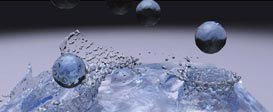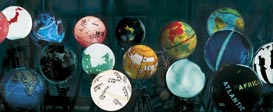Using Augmented Reality to Promote Understanding of Materials Science to School Children
![]() Full Conference
Full Conference ![]() One-Day Full Conference
One-Day Full Conference
Educators Paper
Using tables of data to understand and compare their properties is a rather boring and unintuitive way to learn about materials. Children learn much more quickly and intuitively if they can touch the materials they are learning about and link them directly to their properties and applications. But such an approach can be very demanding on teachers' knowledge and attention, especially in large classes.
The challenge is to engage pupils by exploiting information and communication technology to aid the learning process. If this approach can build on their interest in animations and exciting graphics, developed through their exposure to television and computer games, then so much the better. Kids rarely read the instructions when playing computer games, since they adopt intuitive protocols.
Augmented reality (AR) is a relatively mature technology, but so far it remains largely undiscovered by schools as a means of enhancing traditional lesson delivery. The advantage of AR is its ability to overlay information on real physical objects as viewed on a LCD projector or interactive white board. This paper describes a set of educational AR software for helping children to familiarise themselves with simple physics, chemistry, and materials principles.
AR technology brings photographic and computer-generated images into real environments, facilitating real-time 3D interactions connected to physically available objects. The tools developed in this project comprise four major kinds of applications, each designed to help pupils learn about materials and their applications. The linkages between the hands-on materials and their properties and applications are explored through a series of puzzles, games, and tasks, with the AR providing intuitive guidance. For example, pupils can try to identify the materials required to build a jet engine or play a "top trumps" game with the computer to choose attributes for their materials that could outperform the materials chosen by the computer. The AR system also acts as a virtual microscope to reveal the microstructure of a given material as it is placed under the web-cam. For younger pupils, the school can use a simpler AR tool to learn about the categorisation of materials (metal, ceramic, polymer, and natural). The AR recognition software rewards correct allocations and helps pupils to identify mistakes.
This paper outlines development and deployment of AR and discusses evaluations that will be carried out with teachers and pupils during exhibitions at the Farnborough Air Show, the Manchester Science Festival, and schools visits. The goal is to provide a valuable starting point for other AR developments in educational settings.
Kevin Tan
Emma Lewis
University of Manchester
Nick Avis
Cardiff University
Philip Withers
University of Manchester









